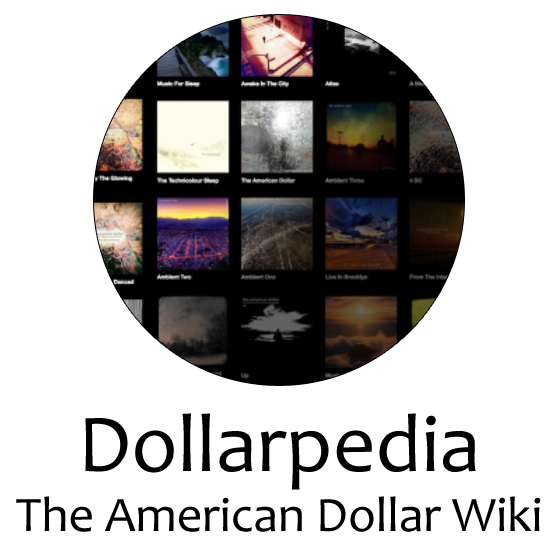History
Formation
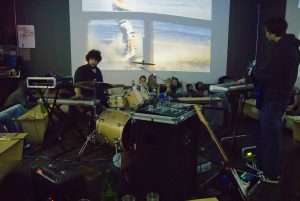
The American Dollar was formed in August, 2005, in Queens, New York City. The members met in high school when Rich’s band needed a drummer for a show rehearsal, and John came forward to play. The two began the project at Emanuele’s parents’ house (who are musicians themselves), when Rich connected an Alesis keyboard to John’s Kaos Pad, which produced the deep buzz-type pattern that can be heard on the first song they recorded, “Everyone Gets Shot”. The title came from a documentary film that was on mute in the background as the two worked on the song. Rich and John recorded the Kaos Pad sample using a simple Behringer mixer, and supplemented it with instruments from a Yamaha Motif and electric drum kit.
First Self-Titled Album
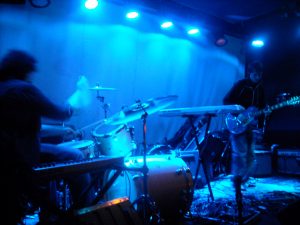
At the time, Myspace was the dominant social media platform for musicians. After the two finished their first song, they created a colorful band page and uploaded their music for people to hear. For the band name, Rich suggested The American Dollar, inspired by a coin bank with a $100 wrapped around it that he had as a child. They sent a few friend requests, and went to have a drink.
The next day, the band was contacted by producer Jim Helton, who wanted to license their music for MTV’s show “Battlegrounds”. They agreed. Inspired by consistent positive responses and the sound they created, Cupolo and Emanuele decided to finish the first album, and continued independent promotion of each song as they uploaded it. John also learned and played some keyboard after initially only playing drums. By the time the musicians finished their final year of college, their first self-titled album was complete, and they had built a small studio in Emanuele’s apartment. Cupolo mixed and mastered the album, and artwork was provided by some friends.
The Technicolour Sleep
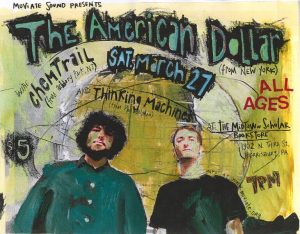
Cupolo and Emanuele recorded their second album in 2006 while each member worked as a school teacher and IT consultant. It was recorded on the most ambitious schedule of all of their albums: the plan was to record the album in June and July of 2006, and then finish mixing in August. They would dedicate almost all holiday time and after-work hours to completing the songs on the record. This would be the first album that the band recorded using VSTs, or computer-based samplers. The duo first incorporated VSTs on the debut album’s bonus track “A Long Goodbye” and they were impressed by the versatility of the new technology – finding good VSTs created an almost infinite number of instruments to work with. After selling enough of their first album to fund a better recording setup, the band forged a relationship with Presonus for a subsidized recording console, and upgraded their microphones as well. These upgrades allowed a significantly better album in terms of fidelity. It was also around this time that musician Nosaj Thing recommended putting their songs on iTunes, which opened up a broader market to The American Dollar’s music. As the band recorded, they were contacted by French artist Fursy Teyssier, who expressed interest in their music and offered to create the forthcoming album’s artwork.
A Memory Stream
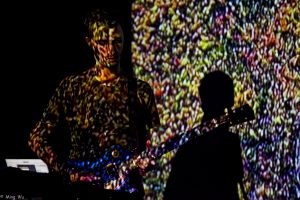
The band pressed on at their studio, once again working normal jobs by day and recording A Memory Stream by night, to a growing, positive audience. Cupolo was also taking degree classes at Fordham University, and one day while working in the computer lab, he noticed amazing artwork on a computer screen which was left open by the previous user. He wrote down the name of the photographer, Greg Brophy, who agreed to provide artwork for the next album, establishing a creative partnership with the band for many years to come. This was the first album of The American Dollar to be manufactured on vinyl, as the band partnered with Pirate Ship Records for its production. At the end of the recording process, the band almost lost the entire album when the computer they were using crashed, and would not turn on for a week. They finally found a single, crucial system file that allowed them to turn the computer back on, and they quickly created mixdowns of all the songs in one long session. The band sent an advance copy of the album to Rogier Hendricks of the Netherlands-based video production company Onesize, which inspired him to create the iconic animated video for the song “Anything You Synthesize”. After the release of this album, the duo quit their day jobs to focus entirely on their music career.
Live Show

The band was considering how to play their music live with just two people for several years, and in between recording albums, they made a plan to do so. First, Cupolo and Emanuele decided which songs would sound good live, and the parts of each song that would sound the best when played live. Then, as Emanuele found the right live monitoring equipment they needed to perform, Cupolo created the instruments and background tracks in Mainstage. The duo began to rehearse in Brooklyn and Astoria to optimize their performance. Their first live show was at the Brooklyn audiovisual room Monkeytown in late 2008. The show featured live visuals chosen by the band and displayed by the venue on all four walls of the room, as the band performed in the center. Live drums, guitar, and keyboards were performed as the two switched back and forth for their respective parts. It was a success they would continue for years to come.
Ambient Albums
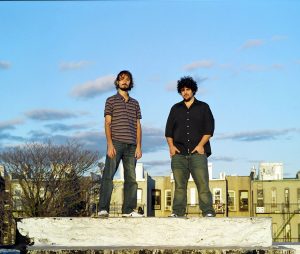
The duo listened to ambient music consistently, and they had a desire to highlight the ambient elements of their songs more specifically. Also, licensing of The American Dollar’s music in television and film was growing in 2009, and the band was often asked for more ambient songs that would be appropriate for soundtracks. This helped to generate the idea of producing ambient re-creations of their songs that would be good for both licensing and listening. A test release for Ambient One was done for Linus Records in Japan, which resulted in a positive response by filmmakers and fans alike. The band then decided to put out a worldwide release, and continued this tradition into the future with Ambient Two and Three. Following the release of Ambient Two, The American Dollar played a special show for the Echoes Gatherings series at St Mary’s Cathedral in 2011 that featured chilled out versions of their heavier songs matched with the natural reverb of the huge space. The ambient albums marked the first time the band engaged in spectral mixing to create new soundscapes from existing instruments. This technique created a greater variation from the original mixes found on the original albums, especially Awake In The City.
Atlas
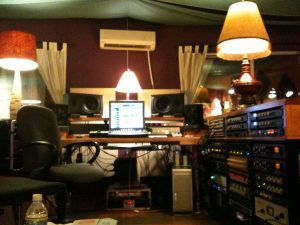
For Atlas, the duo made plans to seriously upgrade the recording sound quality. In 2010, they switched to an optimized recording system, bought Apogees for recording all guitar and microphone-based instruments, and rented out A Bloody Good Record recording studio in Long Island City, to re-record drums and guitars in high-fidelity. They mostly funded this through their first CSI: Miami licensing placement, and finally had a setup that was more convenient to use than the previous, relatively primitive setup. Neither Cupolo or Emanuele had professional recording training, but they figured things out as they moved forward. Their lack of knowledge created funny situations such as importing studio tracks into their own recording system at different sample rates, resulting in a cacophony that threatened the entire session until they figured out the problem. During this time, the band also purchased a touring van with a custom stereo, which they used to test new mixes of new songs while touring. From 2009-2014, the band used this van for several tours across the United States and Canada. The band also played large festivals in several cities in Russia during 2011 and 2012.
Copyright Cases
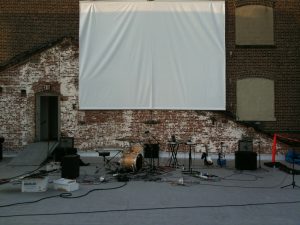
Since the start of the project, The American Dollar licensed their music to hundreds of filmmakers for use in different types of media. The band’s lawyer eventually noticed many companies in a variety of industries were using their music without a license. Represented by their record label, the band was involved in various legal cases to fix the problem. Despite the media circus caused by some cases, all the cases settled amicably, and the duo continued to focus on music uninterrupted by distractions.
Awake In The City
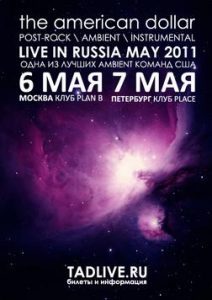
Preceding their 2012 Russia tour, The American Dollar wanted to return to the studio to record a new album. They would aim for a more simple method of writing songs, focused on unique and dominant melodies instead of copmlex percussive elements. Rather than leave the studio for recording drums and guitars as they did on Atlas, drums were recorded on an electric drumkit separately from cymbals, allowing for greater separation and clarity to the music. Rich’s guitars were also recorded using a classic 1960’s era Fender Bassman amplifier and speaker cabinet which belonged to his father. The band also recorded parts of the album while on tour in the midwest USA, culminating in an entire track, “Urbana”. Promo efforts for the album included a video for ‘As We Float’ by Tor Evan Mathison, while cover art was again provided by Greg Brophy.
Live In Brooklyn
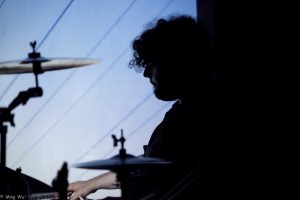
The American Dollar returned to Brooklyn to open for The Mercury Program at The Knitting Factory in 2012. The recording was created from a hybrid of two sound sources – the original soundboard recording, and a stereo mix of two condenser microphones spread out in the audience. Mixed together and mastered by Cupolo, the sound came together, and although originally intended to serve only as a reference recording of a fun show, the band thought it was a good representation of their live performances at the time in general and released it.
Across The Oceans
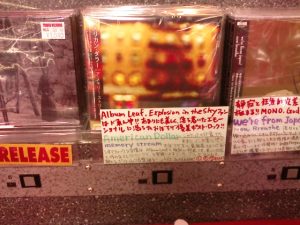
In 2015, Cupolo decided to return to university to complete a degree, in addition to continuing The American Dollar. The band decided to use the time before he started the first semester to create a full length album that would be released later in the year. This decision came after a short hiatus for the band, a time during which each member pursued musical side projects, after creating music as The American Dollar almost constantly for the previous 7 years. The side projects (City Society and Zero Bedroom Apartment) made available new equipment and concepts to be incorporated into The American Dollar. For this album, the band utilized vast sample libraries from various sources, and an instrument called the Monome (a programmable sample trigger grid) to inspire and create patterns for new songs. There was a new excitement to the creative process, which was complex and intense at times. The band also made some major equipment upgrades for this album which allowed Emanuele to return to using acoustic drums on the record. He preferred this over the electronic pads, which sounded good but were stylistically limiting. The band decided to make the album more brief than their previous efforts, refining the elements of each song to present the best ideas more clearly. This philosophy grew to impact their approach to future releases as well.
You’re Listening
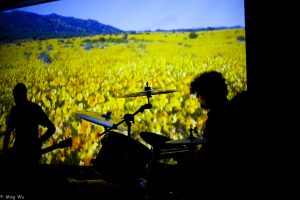 A few months after the release of Across The Oceans, The American Dollar returned to the studio in late 2015 to create a few new songs. One of the first songs recorded in the sessions was 4 BC. The band grew disillusioned with the album format, and decided to release singles, track by track, as they were completed and mastered. On December 1, 2016, the duo released 4 BC, and announced they would release a song a month for all of 2017. The new material was more electronically influenced and again heavily reliant on the Monome for the start of the creative process. The band also upgraded all their equipment for the sessions once again, with a new recording computer, several recording interfaces, and several microphone upgrades. The band finally felt that everything sounded correct after these upgrades. After releasing 13 months worth of individual songs, The American Dollar compiled and released You’re Listening, an album created from the individual releases.
A few months after the release of Across The Oceans, The American Dollar returned to the studio in late 2015 to create a few new songs. One of the first songs recorded in the sessions was 4 BC. The band grew disillusioned with the album format, and decided to release singles, track by track, as they were completed and mastered. On December 1, 2016, the duo released 4 BC, and announced they would release a song a month for all of 2017. The new material was more electronically influenced and again heavily reliant on the Monome for the start of the creative process. The band also upgraded all their equipment for the sessions once again, with a new recording computer, several recording interfaces, and several microphone upgrades. The band finally felt that everything sounded correct after these upgrades. After releasing 13 months worth of individual songs, The American Dollar compiled and released You’re Listening, an album created from the individual releases.
Lofi Dimensions Series
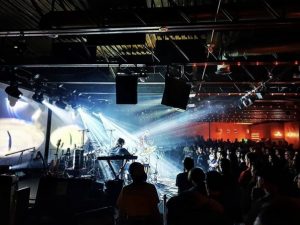 In 2019, the duo renewed their focus on the live setup, and upgraded their live performance gear, setlist, and visuals. They returned to the stage and played some landmark shows with God Is An Astronaut, something that the two bands talked about for years and finally accomplished. These shows were so successful that they inspired plans for a larger international tour featuring the two bands. At the same time, Rich and John each became accustomed to listening to lofi music more and more. They found the style was appealing and similar to the songs they had made themselves. When the Coronavirus crisis arrived in 2020, touring plans were sadly cancelled, but the band knew which direction it wanted to move in immediately – the duo began work making low key, warm tracks to counteract the chaos in the outside world. They relied on artist Yan Goldschmidt to create stylized album art appropriate for the genre, and released their new effort on April 14th, 2020, to the surprise of many listeners. After plans to play the Post Festival were similarly cancelled, the band began their relationship with Post Recordings, and together released Lofi Dimensions on a colorful vinyl pressing.
In 2019, the duo renewed their focus on the live setup, and upgraded their live performance gear, setlist, and visuals. They returned to the stage and played some landmark shows with God Is An Astronaut, something that the two bands talked about for years and finally accomplished. These shows were so successful that they inspired plans for a larger international tour featuring the two bands. At the same time, Rich and John each became accustomed to listening to lofi music more and more. They found the style was appealing and similar to the songs they had made themselves. When the Coronavirus crisis arrived in 2020, touring plans were sadly cancelled, but the band knew which direction it wanted to move in immediately – the duo began work making low key, warm tracks to counteract the chaos in the outside world. They relied on artist Yan Goldschmidt to create stylized album art appropriate for the genre, and released their new effort on April 14th, 2020, to the surprise of many listeners. After plans to play the Post Festival were similarly cancelled, the band began their relationship with Post Recordings, and together released Lofi Dimensions on a colorful vinyl pressing.
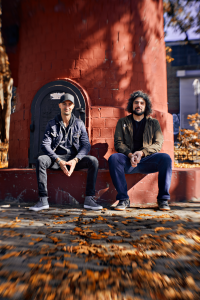 Inspired by the positive response to Lofi Dimensions, the duo fully committed to developing their sound in this new direction. With live shows frozen until further notice, and much of society shut down, Cupolo and Emanuele worked in their recording studios and hung out at the beach during the summer, working on the release of a follow-up album. The Lofi Dimensions albums were recorded more separately than their previous albums, with the musicians sending pieces back and forth as they were completed. The focus on Lofi 2 was to create even shorter pieces that would sound good on repeat, and expose the listener to a greater variety of impressions within a shorter amount of time. The effort was released August 21, 2020, with cozy animated artwork by graphic artist Sonia Lorenz.
Inspired by the positive response to Lofi Dimensions, the duo fully committed to developing their sound in this new direction. With live shows frozen until further notice, and much of society shut down, Cupolo and Emanuele worked in their recording studios and hung out at the beach during the summer, working on the release of a follow-up album. The Lofi Dimensions albums were recorded more separately than their previous albums, with the musicians sending pieces back and forth as they were completed. The focus on Lofi 2 was to create even shorter pieces that would sound good on repeat, and expose the listener to a greater variety of impressions within a shorter amount of time. The effort was released August 21, 2020, with cozy animated artwork by graphic artist Sonia Lorenz.
The duo was now in a solid groove, and stayed busy carving out their sound in a new genre similar to their historical releases. The band had individual breakthroughs, with Emanuele sharpening his talent for putting together diverse samples, and Cupolo discovering guitar tones appropriate to the new sound along with new mixing techniques. Additional songs were recorded, inspired by time spent near the ocean during the summer and reconnecting with friends and family as society opened up again. These songs were compiled under the title track’s name “Cosmic Wave” and released on October 15th, 2020. Emanuele at this point had also created videos for several lofi songs, which were uploaded to the band’s Youtube channel. More releases followed over the next few years in the form of individual singles, and EP’s such as “Blaze” and “Right This Way”, with the band preferring the short format releases to get new music to their listeners as soon as possible.
The band continued recording throughout 2021, after Rich started a studio in Tampa and John updated his studio in Queens. The songs still featured a laid-back, dreamy style with lofi beats, and they also incorporated more ambient and post-rock elements typical of the band’s traditional sound. Inspiration came from the experiences of 2021, which were a wild combination of dark and hopeful moments, reflected by the track names on the album. The final album of the series, Lofi Dimensions 3, was released on July 20th, 2022, with animated city skyline artwork again provided by Sonia Lorenz.
Vocal Collaborations
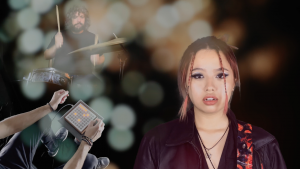 While John and Rich worked on ambient rework mixes throughout the end of 2022, they also developed lyrics and instrumentals with the intention of incorporating vocals for the first time in the band’s career. The idea was inspired by watching live videos of bands from the early 2000’s who incorporated female guest vocalists into their catalog.
While John and Rich worked on ambient rework mixes throughout the end of 2022, they also developed lyrics and instrumentals with the intention of incorporating vocals for the first time in the band’s career. The idea was inspired by watching live videos of bands from the early 2000’s who incorporated female guest vocalists into their catalog.
While watching some of these videos on Youtube one night, the algorithm randomly selected a video by Peokhezh singing a cover song when the videos were left on in the background. When the band heard her voice, they knew she would be a great fit for the songs they were developing, so they asked if she would be interested in a collaboration and she said yes.
The first song recorded was Happy Home On A Lonely Ground, with recordings sent back and forth online between Vietnam and New York. The results inspired everyone to commit to filming a music video, so the band sent a green screen halfway around the world, which Peokhezh used to film her parts. John and Rich similarly filmed their respective parts, John selected video clips to use, and the band’s first music video incorporating their performance of a song was created.
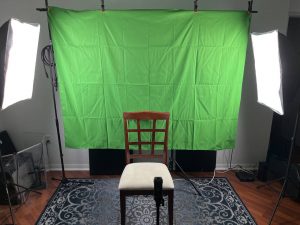 Peokhezh joined The American Dollar for two more songs, Sun and Skies and Start Again, and with the addition of one more instrumental interlude track entitled In Your Mind, the first vocal EP was ready for release on June 16th, 2023. During this time, the band also discovered the Grimes AI project, which they found to be an interesting and novel tool, a development that was similar to the creation of VSTs decades ago. They converted vocals supplied by Rich in a demo, and the song “Swim” became the first AI vocal track to be created by the band.
Peokhezh joined The American Dollar for two more songs, Sun and Skies and Start Again, and with the addition of one more instrumental interlude track entitled In Your Mind, the first vocal EP was ready for release on June 16th, 2023. During this time, the band also discovered the Grimes AI project, which they found to be an interesting and novel tool, a development that was similar to the creation of VSTs decades ago. They converted vocals supplied by Rich in a demo, and the song “Swim” became the first AI vocal track to be created by the band.
Rework Collaborations
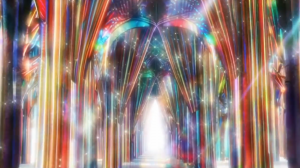 After the release of Lofi Dimensions 3, the band was contacted by Ezhevika Records with an idea to create an ambient rework version of the entire album by different artists from around the world. The timing was perfect because the band had a similar idea to do the ambient reworks themselves before they were contacted by Ezhevika, and the idea of creating a compilation with a group of talented artists instead was exciting. They approved each rework piece by piece, culminating in the rework album’s release on May 5th, 2023.
After the release of Lofi Dimensions 3, the band was contacted by Ezhevika Records with an idea to create an ambient rework version of the entire album by different artists from around the world. The timing was perfect because the band had a similar idea to do the ambient reworks themselves before they were contacted by Ezhevika, and the idea of creating a compilation with a group of talented artists instead was exciting. They approved each rework piece by piece, culminating in the rework album’s release on May 5th, 2023.
Following this, the band continued to collaborate with dozens of acclaimed artists worldwide to create reworks of their Lofi, Post-Rock and Ambient material. Working with Polymia Records, many new iconic re-interpretations emerged which became popular themselves, with each artist’s unique style contributing a fresh and impressive design based on the original tracks. The album XX: Greatest Hits Reimagined was released in the fall of 2025, marking the 20 year anniversary of The American Dollar with a global roster of incredible talent and energy.
The band also began creating their own videos on a large scale, at first by searching video archives for appropriate short films to make their ideas come to life. Later, when AI tools became available, they began generating hours of AI footage, remixing and tweaking the results until each video matched the sentiment and vision of each song. John primarily was responsible for the video editing and became skilled in the practice, while both members contributed to the artistic direction. Their efforts are particularly striking in the video for the 2026 Rework of Twelve Days Awake, an updated version of the original song first started in 2009, forgotten about, then rediscovered and finished in the fall of 2025.
